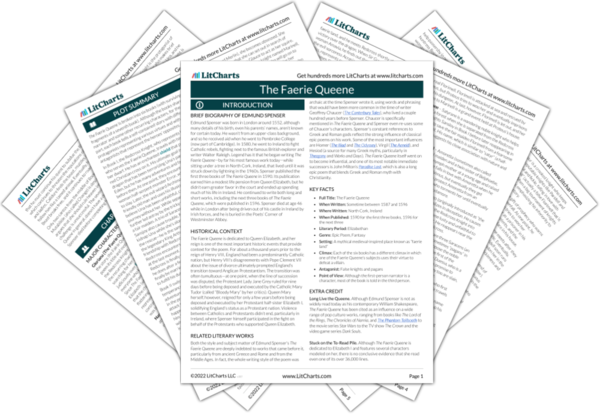It's interesting that Duessa shows up in the court of Mercilla, since earlier in Book I, Duessa was one of the few villains to receive mercy rather than being beheaded. Rather than repent, however, Duessa went right back to her villainous ways. Mercilla’s pity for Duessa suggests the depth of her generosity and contrasts with the more strident calls for justice from others in the court.
